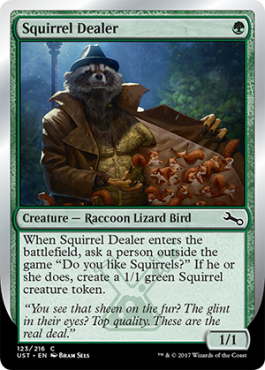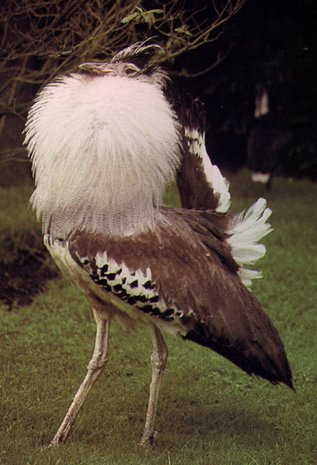Game birds at a market. Photo courtesy of Wikimedia Commons

May 23, 2017 - Explore Tabetha King's board 'Gamebirds Care & Housing', followed by 748 people on Pinterest. See more ideas about chickens backyard, coops, pigeon loft. “It’s the pigeon of the game,” Adam Mair revealed. Proudly displayed, with a Sabres logo on each wing, is a stuffed turquoise bird that currently serves as a unique incentive for the team. Pigeon racing is the sport of releasing specially trained homing pigeons, which then return to their homes over a carefully measured distance.The time it takes the animal to cover the specified distance is measured and the bird's rate of travel is calculated and compared with all of the other pigeons in the race to determine which animal returned at the highest speed.
Contents include: Rough Shooting and Mixed Bags, Pigeon Shooting, Other Birds of Sport, and Game on the Table. Many vintage books such as this are becoming increasingly rare and expensive. We are republishing this vintage book now in an affordable, modern, high-quality edition complete with a specially commissioned new introduction on pigeons.' Game birds may include guinea fowl, partridges, peacocks, pheasants, pigeons and doves, quail or squab (a young pigeon), swans, wild turkeys and some ducks, such as mallards or wood ducks. Only a few species of pheasants, partridges and quail are raised as flight-ready birds; an incredible number of species and variants are raised for the.
As the name implies, game birds are birds that are hunted in the wild, as well as kept in captivity where they are raised, often with some difficulty. They include guinea fowl, partridge, pheasants, squabs, and quail. Except for quail, they are seasonal breeders, so the product is not available fresh all year round. None are indigenous to Australia.

Is A Pigeon A Game Bird Crossword Clue
Partridge, although grown in small numbers, have not been included here, as it is not possible to get accurate information on numbers or farms. One Victorian breeder raises 2000 partridges each year for shoots. Also, some large producers and processors of other species (e.g. ducks) may also market quail, squabs, pheasants and guinea fowl under their own label but the product is often supplied from a game bird processor already packaged and frozen under the large producer’s own label. Pheasants and partridge are sometimes raised for shooting in Australia but information on these practices is difficult to obtain.
Some of the information reported here is based on surveys carried out by the Rural Industries Research and Development Council and published in 2003, 2005 and 2009 although much of the data are older.
The production of game birds is labour-intensive and usually a family operation. There is often more than one game bird species grown on a game farm and most birds are processed at an independent, off-farm facility. The product is relatively expensive and is found mainly in gourmet restaurants, boutique butchers and occasionally in retail stores. The retail price for a 1 kg pheasant and 1 kg guinea fowl as of July 2009 was AUD $26.70. Demand is governed largely by economic conditions, however demand has increased over the past 10 years and the most recent value of the industry is in excess of $20 million/year for game birds in total. Over half of this is for Japanese quail. Game bird meat generally has a ‘gamey flavour’ although this is an all-embracing term and varies depending on species and their diet. Formulated feeds for game birds are often the same as those for other domestic species such as turkeys, and are changed according to production phase.
Biosecurity on all poultry farms is of the highest priority. The Department of Agriculture, Fisheries and Forestry with Animal Health and the Poultry Industry have produced the ‘National Farm Biosecurity Manual-Poultry Production‘ which covers all farmed avian species and producers are expected to adhere to these guidelines. However, biosecurity on some game farms is minimal compared to the commercial poultry industry and visitors are sometimes welcome.
Information provided by Dr. David Farrell
Guinea FowlPheasantQuailSquabPhotograph: Susie Carter
Feathered game tends to fall into two categories – the paler meat of partridge and pheasant and the darker meat of pigeon and mallard duck. While you might expect the wines you match with mallard to be interchangeable with farmed duck, the two are quite different. The mallard has a much stronger flavour than its domesticated cousin and can cope with a more intensely flavoured wine to accompany, though it’s also much lighter in texture, having worked off all that fat from a lifetime on the wing.
Both mallard and pigeon benefit from quick cooking and a pink centre to prevent the lean meat from toughening.
Is A Wood Pigeon A Game Bird
- Wrap 1 mallard breast or 2 pigeon breasts per person with prosciutto, securing with cocktail sticks.
- Sear on either side in a hot frying pan until nicely coloured, then finish off in the oven for 5 minutes at 180⁰C / gas 4.
- Leave to rest for 5 minutes before slicing.
Serve either with homemade skin-on chips and perhaps a grilled mushroom or two, or with shredded cabbage sautéed with garlic and plenty of white pepper. In either case, a mature Syrah from the Northern Rhône would be a very fitting accompaniment, with soft ripe tannins, concentrated blackberry fruit and a touch of pepper on the finish.
As with most meat, the sauce that accompanies is going to make a big difference to the wine you serve. While the Northern Rhône is the best place to look for Syrah to pair with very savoury dishes involving wild mushrooms and the like, when I serve game with a fruity sauce – perhaps a spoonful of hedgerow jelly stirred into the gravy with a glug of port – I tend to turn to Australian Shiraz where riper grapes make for a sweeter, fruitier wine.
When it comes to the lighter, more delicately flavoured meat of pheasant and partridge, I like to poach it gently in a creamy sauce with orchard fruit as they do in Northern France. For these tender birds, I eschew reds altogether in favour of dry, aromatic Alsatian Pinot Gris. The wine has a lush texture to balance the weight of the cream, but enough acidity to cut through such a rich dish.
Having explained back in September why the five primary tastes are more important than the flavour of the wine itself, finding a wine with some gamey, farmyardy notes makes a perfect pairing with better-hung game birds. These rancio flavours tend to only arrive after a bit of bottle aging, which also helps to tame the tannins that are best avoided with poultry. My favourite grape variety for this is Pinot Noir: try Benjamin Leroux’s Les Allots from Nuits-St Georges. If a well-aged burgundy is out of your price bracket, look for some of the more mature new world examples. New Zealand and USA in particular are making some wonderfully concentrated age-worthy pinots. Also look out for biodynamic wines which seem to achieve those savoury, woodland flavours that little bit quicker. This biodynamic Southern Rhône blend from Domaine la Fourmente would be a good bet to partner darker-meated birds – those forest floor aromas would make them feel right at home.
Read Susie’s last post on pairing wine and chicken.